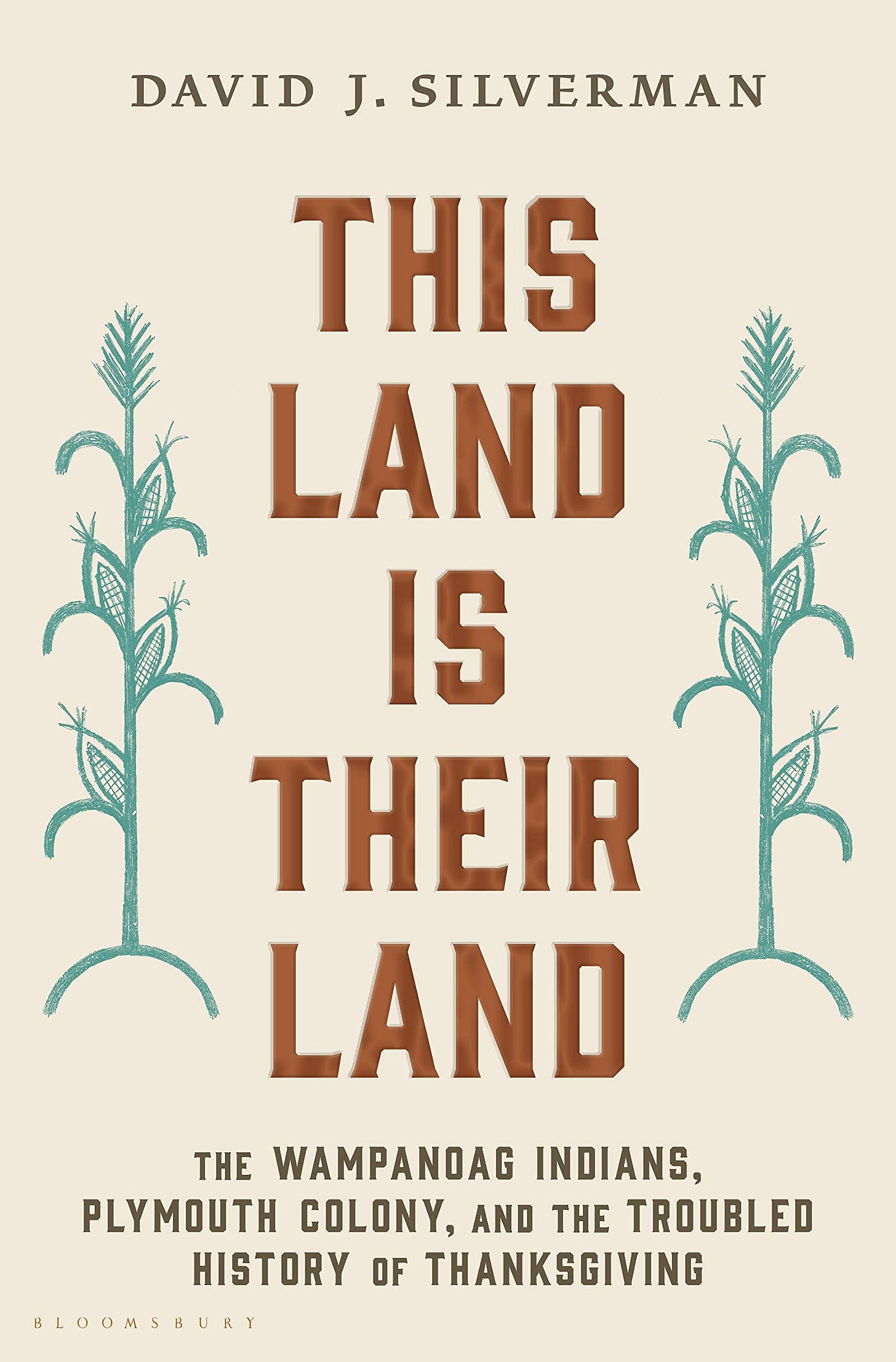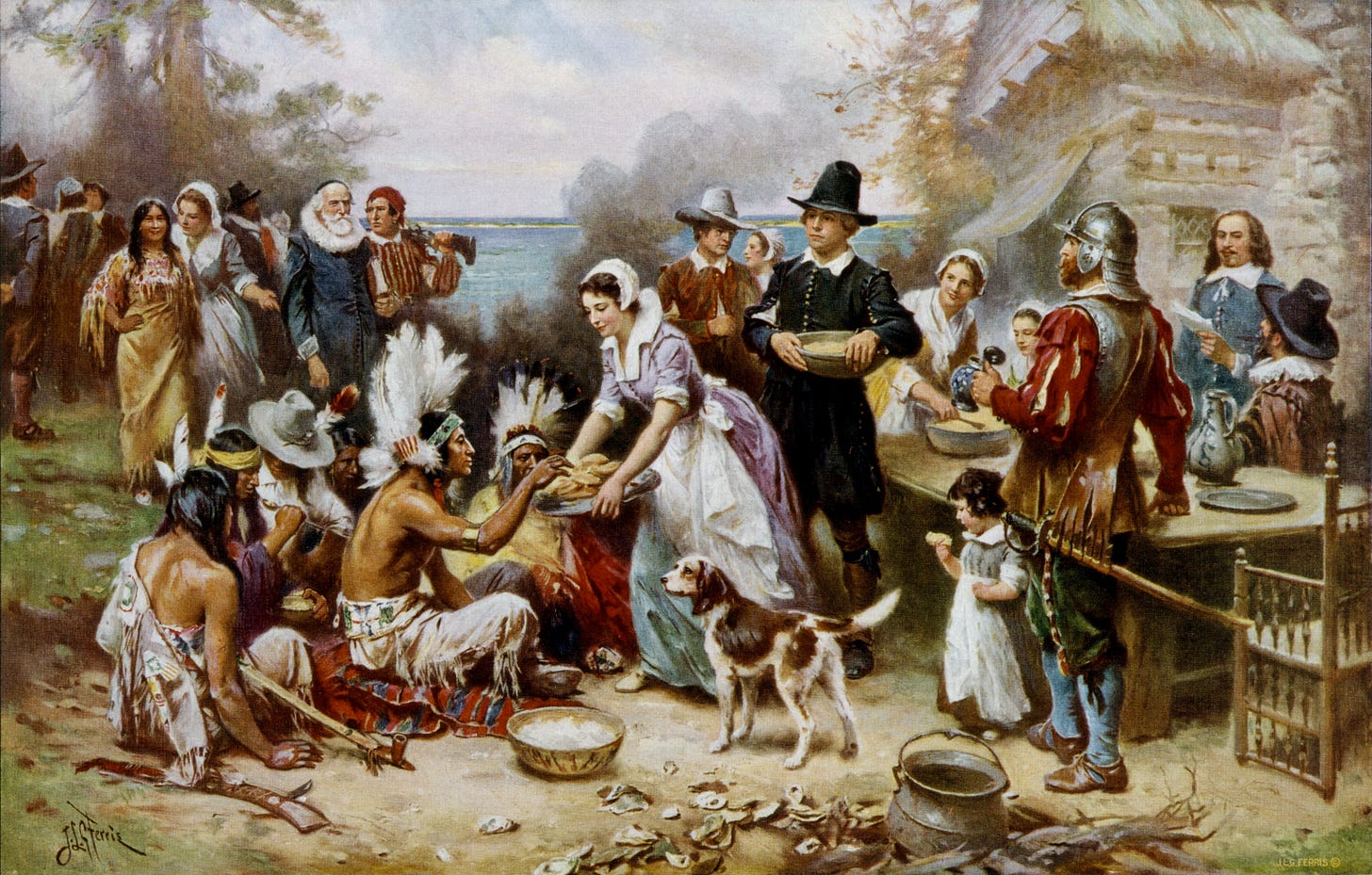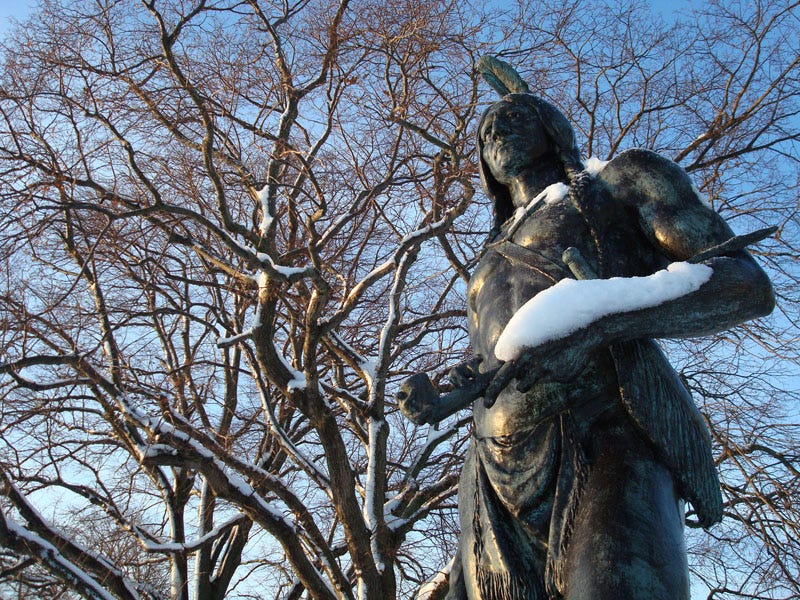Good morning, premium pal,
And happy festive tidings! If you’re in the US, I hope you’re preparing for a relaxing day off. In anticipation of Thanksgiving, I come bearing an unfriendly reminder that the holiday millions of people will celebrate tomorrow has its roots in white supremacy.
Here’s how…

The Wampanoags trace their ancestry back 10,000 years to southeastern Massachusetts. Theirs was a land of plenty, filled with fish, waterfowl, seals, whales, berries, and Vitamixes to blend them all together. All told, before European contact, there were ~22,000 Wampanoags spread across southern New England, and ~135,000 Native people in the area as a whole, including the Narragansetts, the Wampanoags’ more populous rival to the South.1
Fast forward, and trade between the English, French, Dutch, and Native peoples became an annual affair in the early 1600s. It wasn’t long before these interactions turned violent. Just one example: in 1614, the English lured 20 Wampanoag men onto a ship and sold them into slavery in Spain. Through a few twisted turns of fortune, one of these men, Tisquantum, evaded forced labor and instead ended up working for an Englishman keen to trade in Massachusetts. They returned to the New England coastline five years later, only to find that two-thirds of Tisquantum’s people had disappeared in a pandemic the lethal likes of which Native North America had likely never seen.
Now, in the standard telling of the Pilgrims’ landing in Plymouth, the local Indians (rarely identified by tribe) kept their distance at first. Somehow though, the fearful Indians then “overcame their caution and proved to be ‘friendly’,” recounts historian David Silverman while trying to avoid vomiting his mouth.2
Of course, absent from this tale is why the Wampanoags were so cautious: namely, that they were traumatized survivors who didn’t know whether the people in the funny hats would somehow rejuvenate an unprecedented scourge or try to take them captive. This context also sheds light on why the Wampanoags’ leader Ousamequin, often referred to as Massasoit, decided to approach the Grims in the spring of 1621. In reality, Ousamequin wasn’t “being kind or friendly,” explains Steven Peters, a Wampanoag author. “He was in dire straits and being strategic,” and with the threat of battle with the Narragansetts still looming, “we were desperately trying to not become extinct.”3
The English, themselves desperate after a first winter in which half of their population died from cold and starvation (maybe they shouldn’t have arrived in New England in November), agreed to a mutual defense pact. Under the Wampanoags’ tutelage, they learned how to grow crops like beans, squash, and maize, and collected their first harvest in fall 1621. To celebrate, Plymouth’s leaders set time aside to “rejoice together,” leading to the first Thanksgiving as we know it today. Well, kind of: they didn’t actually invite the Wampanoags, but Ousamequin showed up unannounced with “ninety men” (now that’s what I call an entrance), and the two peoples “entertained and feasted” together for three days.

Afterward… well, what did happen after the meal? On this score, the Thanksgiving myth is suspiciously vague, other than to suggest that the English went on to flourish. In some ways, this is true: due to a subsequent “Great Migration” of thousands more puritans, by 1670, there were ~65,000 English people in New England, about double the total number of Native people. However, missing from this narrative is the fact that the new arrivals thrived thanks to slavery.




